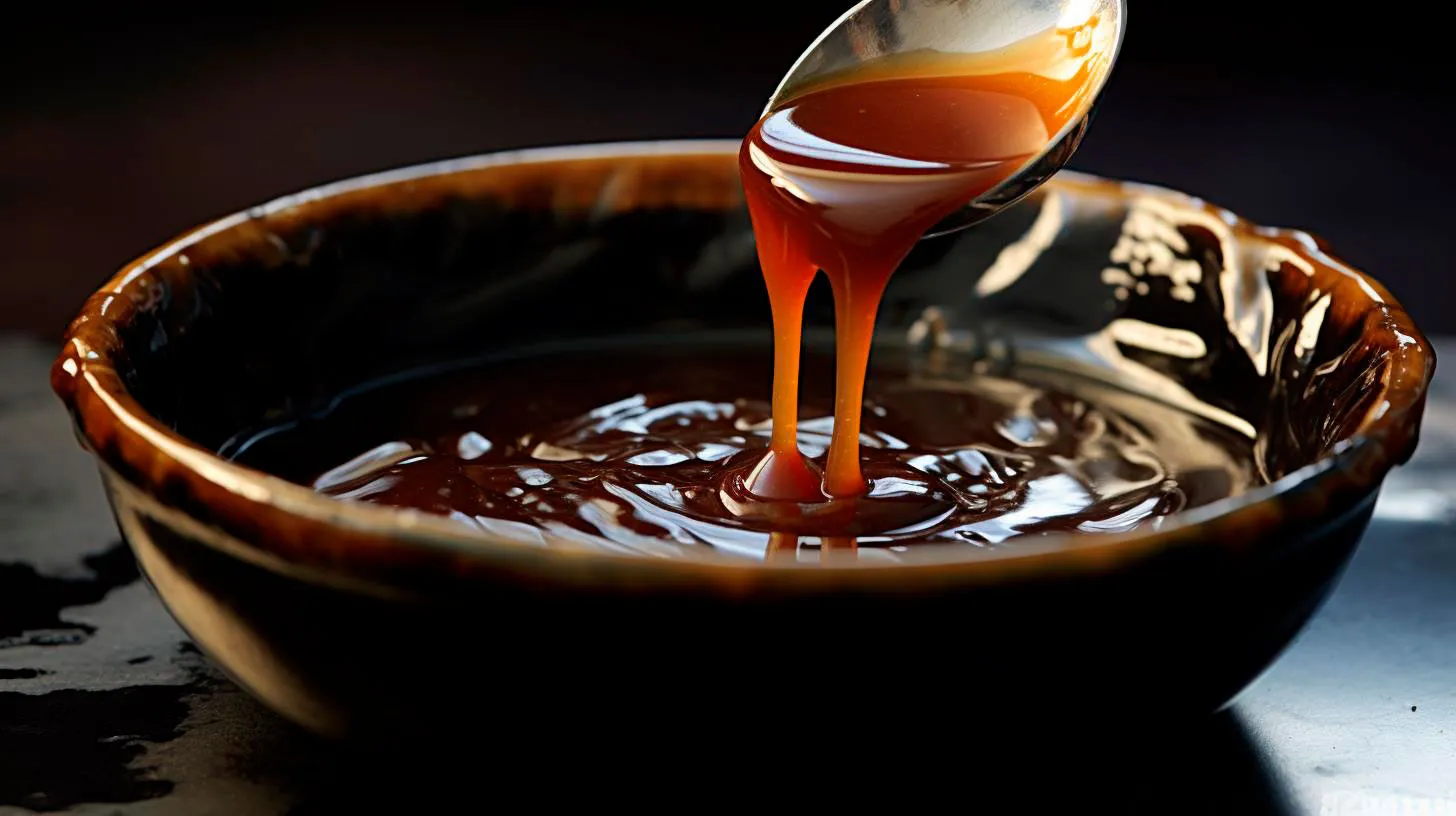Unleash Your Inner Sushi Chef with the Perfect Rolling Mat
In this article, we will explore the advantages of using a rolling mat and provide you with some tips to help you become a sushi master in no time.
The Importance of a Rolling Mat
A rolling mat is a simple yet indispensable utensil that significantly enhances the sushi-making process. Here are some reasons why having a rolling mat is vital:
- Perfect Shape: A rolling mat ensures that your sushi rolls maintain their traditional cylindrical shape. It applies uniform pressure to the roll, resulting in a neat and attractive appearance. With a rolling mat, you can achieve that picture-perfect sushi presentation.
- Precise Rolling: The mat provides the necessary support and control while rolling the sushi. It helps you evenly distribute the ingredients and create a tight roll without any gaps or loose sections. This precision is essential to prevent the sushi from falling apart.
- Effortless Handling: Using a rolling mat makes the sushi-making process more streamlined and less messy. It allows you to control the size, thickness, and texture of the roll easily. With the right technique, you will find yourself effortlessly rolling sushi like a seasoned professional.
- Hygiene and Cleanliness: Rolling mats are typically made from bamboo or silicone, which are easy to clean and maintain. Their smooth surface prevents ingredients from sticking, and they can be wiped down or washed after each use. This ensures hygiene and prevents any cross-contamination.
Become a Sushi Master: Tips and Techniques
Now that you understand the importance of a rolling mat, here are some tips and techniques to help you become a sushi master:
1. Choose the Right Rolling Mat
When selecting a rolling mat, consider the material and size that best suits your needs. Bamboo mats are traditional, inexpensive, and provide a natural texture for the sushi. Silicone mats, on the other hand, are flexible, non-stick, and easy to clean. Choose the one that suits your preferences and budget.
2. Prepare Your Ingredients
Before rolling your sushi, ensure your ingredients are properly prepared. Slice your fish or vegetables into thin, uniform strips and cook your rice to the perfect consistency. Preparing ingredients in advance will enable you to roll your sushi smoothly and efficiently.
3. Use High-Quality Nori
Nori, or seaweed sheets, is the outer layer that wraps around the sushi roll. Opt for high-quality nori to ensure its strength and flavor. Crisp and fresh nori will enhance the overall taste and texture of your sushi.
4. Master the Rolling Technique
Start by placing the nori on the rolling mat, rough side up. Spread a layer of rice evenly over the nori, leaving a small border at the top and bottom edges. Add your chosen fillings, then lift the mat and start rolling gently but firmly, tucking in the ingredients as you go. Apply even pressure across the entire roll to create a tightly packed cylinder.
5. Perfect Slicing
Once your sushi roll is complete, use a sharp knife dipped in water to make clean, precise cuts. Wetting the knife will prevent the sticky rice from clinging and allow for smooth, even slicing. Take your time and cut the roll into bite-sized pieces, ensuring each slice showcases the vibrant layers of your creation.
Key Takeaways
A rolling mat is an essential tool for any aspiring sushi chef. Here are the key takeaways to remember:
- A rolling mat ensures the perfect shape, precise rolling, effortless handling, and hygiene in sushi making.
- Choose a rolling mat made from bamboo or silicone based on your preferences and budget.
- Prepare your ingredients properly before rolling to ensure a smooth and efficient process.
- Opt for high-quality nori to enhance the taste and texture of your sushi.
- Master the rolling technique to create tightly packed and visually appealing sushi rolls.
- Use a sharp knife dipped in water to make clean and precise cuts when slicing your sushi.
With the right rolling mat and a little practice, you can channel your inner sushi chef and create impressive rolls that will impress your family and friends. So, embrace the art of sushi-making with a rolling mat and unleash your culinary creativity today!
The Art of Sushi Making: Embrace the Rolling Mat
In this article, we will explore the key elements of sushi making, with a focus on the indispensable tool – the rolling mat.
Understanding Sushi Making
Sushi making is not just about rolling together raw fish and rice. It is a culinary art that demands precision, creativity, and attention to detail. From the choice of ingredients to the assembly technique, every step contributes to the final result. Whether you are a sushi enthusiast or aspire to become a sushi chef, mastering the art of sushi making is a rewarding journey.
The Role of the Rolling Mat
One of the essential tools in sushi making is the rolling mat, also known as a bamboo mat or makisu. It serves as the foundation for creating perfectly shaped sushi rolls. The rolling mat provides the necessary structure and texture, allowing the sushi rice and fillings to blend harmoniously.
Advantages of Using a Rolling Mat
- Precision and Uniformity: The rolling mat ensures consistent roll thickness and shape, resulting in visually appealing sushi.
- Tight Seal: By using a rolling mat, you can apply optimal pressure to create a tight seal, preventing the sushi roll from falling apart.
- Controlled Fillings: The rolling mat enables better control over the amount and placement of fillings, ensuring an even distribution throughout the roll.
- Ease of Use: With a rolling mat, handling and maneuvering sushi rolls becomes effortless, making the sushi making process smoother.
Key Steps in Using a Rolling Mat
Now that we understand the significance of the rolling mat, let’s explore the key steps involved in using it to create perfect sushi rolls:
- Prepare the Rolling Mat: Start by placing a sheet of plastic wrap over the rolling mat. This prevents the rice from sticking to the mat and makes it easier to clean after use.
- Add Nori and Rice: Lay a sheet of nori (seaweed) on top of the plastic-wrapped mat. Spread a thin and even layer of sushi rice over the nori, leaving a small border without rice at the top.
- Add Fillings: Place your chosen fillings, such as fresh fish, vegetables, or tofu, along the bottom third of the rice-covered nori. Be creative and experiment with different combinations.
- Rolling Technique: Lift the bottom edge of the rolling mat, covering the fillings with the rice and nori. Apply gentle pressure and continue rolling forward, creating a tight and compact sushi roll.
- Seal the Roll: When the roll is complete, moisten the top border of the nori with water or vinegar to seal the roll securely.
- Cut and Serve: Use a sharp knife to slice the sushi roll into bite-sized pieces. Arrange them beautifully on a plate and serve with pickled ginger, soy sauce, and wasabi.
Takeaways from the Art of Sushi Making
Embarking on the art of sushi making can be a delightful and fulfilling experience. Here are some key takeaways to keep in mind:
- Practice makes perfect: Sushi making requires patience and practice. Don’t be discouraged if your first attempts are not flawless.
- Quality ingredients matter: Select fresh fish, vegetables, and other fillings to enhance the taste and appearance of your sushi.
- Be creative: Experiment with different flavors, textures, and presentations to create unique sushi rolls.
- Enjoy the process: Sushi making is as much about the journey as it is about the final result. Embrace the art and have fun exploring new techniques.
As you delve into the art of sushi making, remember that the rolling mat is your trusty companion, aiding you in creating sushi rolls that are not only visually enticing but also bursting with authentic flavors. So, get your rolling mat ready and embark on this culinary adventure!
Elevate Your Sushi Skills with a High-Quality Rolling Mat
Not all rolling mats are created equal. A premium rolling mat can make a significant difference in the outcome of your sushi rolls. Let’s explore the features that make a rolling mat stand out from the rest, the advantages of using one, and the key takeaways to enhance your sushi-making endeavors.
Features of a High-Quality Rolling Mat:
- Flexible and sturdy: A good rolling mat needs to be flexible enough to roll your sushi while still being sturdy and durable.
- Natural materials: The best rolling mats are made from natural materials like bamboo, providing a more authentic and traditional touch to your sushi-making process.
- Non-stick surface: A high-quality rolling mat will have a non-stick surface, preventing your sushi rice from sticking to the mat and ensuring a seamless rolling experience.
- Easy to clean: Look for rolling mats that are easy to clean and maintain. Bamboo mats that are tightly woven offer easy cleanup and are resistant to staining and odors.
Advantages of Using a Rolling Mat:
A rolling mat is an essential tool for sushi making, offering several advantages that enhance your overall sushi experience:
- Precision rolling: A rolling mat allows you to create tightly rolled sushi with precise and even shapes, resulting in beautiful presentation.
- Consistency: Using a rolling mat ensures that each sushi roll you make is consistent in size and shape, enhancing both the aesthetics and taste of your sushi.
- Efficiency: With a rolling mat, you can roll your sushi quickly and efficiently, saving you time and effort in the process.
- Versatility: Rolling mats are not limited to sushi rolls. You can also use them to wrap other ingredients like vegetables or create creative and unique sushi variations.
Key Takeaways for Perfecting Your Sushi Skills:
Now that you understand the importance of a high-quality rolling mat, here are some key takeaways to help you elevate your sushi skills:
Invest in a premium rolling mat:
Choose a rolling mat made from natural bamboo, providing durability and a traditional touch to your sushi-making process. Look for mats with a non-stick surface for easy rolling and clean-up.
Practice precision rolling:
Use your rolling mat to create tightly rolled sushi with precise and even shapes. This will not only enhance the presentation of your rolls but also ensure a better eating experience.
Experiment with different fillings:
Don’t limit yourself to traditional sushi fillings. With a rolling mat, you can get creative and experiment with various ingredients, like fresh vegetables, marinated tofu, or even fruits, to create unique and exciting sushi combinations.
Master the art of sushi rice:
Sushi rice is the foundation of any great sushi roll. Take the time to perfect your sushi rice preparation, ensuring the right balance of vinegar, sweetness, and stickiness. A high-quality rolling mat will help you roll and shape the rice effortlessly.
Enhance your plating skills:
Finally, don’t forget about the presentation of your sushi. Invest time in enhancing your plating skills to create visually stunning and appetizing sushi arrangements. A well-rolled sushi roll using a high-quality rolling mat will make the plating process much easier and more satisfying.
By following these key takeaways and using a high-quality rolling mat, you can elevate your sushi skills and create restaurant-worthy sushi rolls right in the comfort of your own kitchen. Enjoy the art of sushi making and indulge in the flavors of this beloved Japanese cuisine.
Unlocking Sushi Mastery: The Power of an Exceptional Rolling Mat
In this article, we will explore the importance of a high-quality rolling mat and how it can elevate your sushi-making skills to the next level.
The Essence of a Rolling Mat
A rolling mat, also known as a makisu, is a fundamental tool used in sushi-making. It typically consists of thin wooden slats woven together with a string. This unique design allows for easy rolling and shaping of sushi rolls, ensuring that the ingredients stay in place and form a tight, compact roll.
The Key Features
- High-quality materials – A good rolling mat is made from bamboo slats, which are durable and resistant to moisture. This ensures the mat will last for a long time, even with frequent use.
- Smooth texture – The surface of the mat should be smooth to prevent sticking and facilitate seamless rolling.
- Proper size – The ideal rolling mat should have dimensions of around 9.5 inches by 9.5 inches, providing enough space to roll a variety of sushi types.
Advantages of Using an Exceptional Rolling Mat
Investing in a high-quality rolling mat comes with several advantages that can significantly improve your sushi-making experience. Let’s take a closer look at the key benefits:
1. Precise and Consistent Rolling
An exceptional rolling mat allows you to create perfectly shaped sushi rolls every time. Its sturdy construction and tight weaving ensure that the ingredients are evenly distributed, resulting in a neatly rolled sushi roll. This consistency is essential, not just for the presentation of your dishes, but also for the overall taste and texture.
2. Easy to Use and Clean
The smooth surface of a quality rolling mat prevents the ingredients from sticking to it during the rolling process. This makes it effortless to shape and release the sushi rolls, ensuring they maintain their form. Furthermore, cleaning the mat becomes a breeze since bamboo is naturally resistant to stains and odors.
3. Versatility in Sushi Types
A good rolling mat provides the flexibility to create various sushi types, from traditional maki rolls to inside-out rolls and even sushi burritos. The proper size and construction of the mat enable you to experiment and expand your sushi repertoire without limitations.
Key Takeaways
Unlocking sushi mastery requires attention to detail and the right tools. Investing in an exceptional rolling mat can elevate your sushi-making skills and help you create stunning culinary creations. Here are the key takeaways:
- A high-quality rolling mat is made from bamboo, ensuring durability and resistance to moisture.
- The smooth texture of the mat prevents sticking and facilitates easy rolling.
- Consistent rolling and precise shaping are achievable with an exceptional rolling mat.
- Easy maintenance and versatility make a good rolling mat an essential tool in your sushi-making journey.
Remember, mastering the art of sushi takes time and practice, but with an outstanding rolling mat by your side, you’ll be one step closer to creating sushi that rivals the professionals. Happy rolling!


